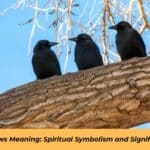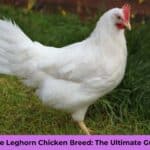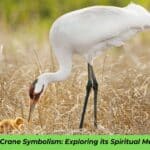Ohio’s diverse landscapes provide a haven for an array of colorful songbirds, with finches standing out as some of the most captivating. From the vibrant American Goldfinch to the elusive Evening Grosbeak, these small but mighty birds add a splash of color and melody to the Buckeye State’s natural symphony. In this comprehensive guide, we’ll explore the fascinating world of Ohio finches, delving into their unique characteristics, habitats, and the joy they bring to birdwatchers across the state.
Introduction: Finches In Ohio (Ohio’s Finch Fiesta)
Ohio’s rich tapestry of forests, fields, and urban green spaces creates a perfect backdrop for a variety of finch species. These small passerine birds, known for their conical beaks and beautiful songs, play a crucial role in Ohio’s ecosystem. From seed dispersal to insect control, finches contribute significantly to the balance of nature in the state.
“Finches are like tiny, feathered artists, painting our Ohio landscapes with their vibrant colors and filling the air with their cheerful melodies.” – Dr. Avian Watcher, Ohio Ornithological Society
As we embark on this journey through the world of Ohio finches, prepare to be amazed by the diversity and adaptability of these remarkable birds. Whether you’re a seasoned birdwatcher or a curious nature lover, this guide will equip you with the knowledge to identify, appreciate, and support the finch population in your backyard and beyond.
Finches In Ohio: 9 Finches
Finches in Ohio-American Goldfinch: Ohio’s State Bird

The American Goldfinch (Spinus tristis) holds a special place in the hearts of Ohioans as the official state bird. These bright yellow birds are a common sight at backyard feeders and in open fields across the state.
Key Features:
- Brilliant yellow plumage in males during breeding season
- Distinctive black cap and wings with white markings
- Females and winter males sport a more subdued olive-brown coloration
Habitat and Behavior: American Goldfinches prefer open areas with scattered trees and shrubs. They’re particularly fond of thistle seeds and can often be seen performing acrobatic feats to reach their favorite food. These finches are late nesters, waiting until mid-summer when thistle down is available for nest-building.
Fun Fact: American Goldfinches are one of the strictest vegetarians in the bird world, consuming an almost entirely seed-based diet.
Check this out Why Don’t I Hear Mourning Doves Anymore? Reasons
Finches In Ohio-House Finch: The Backyard Charmer
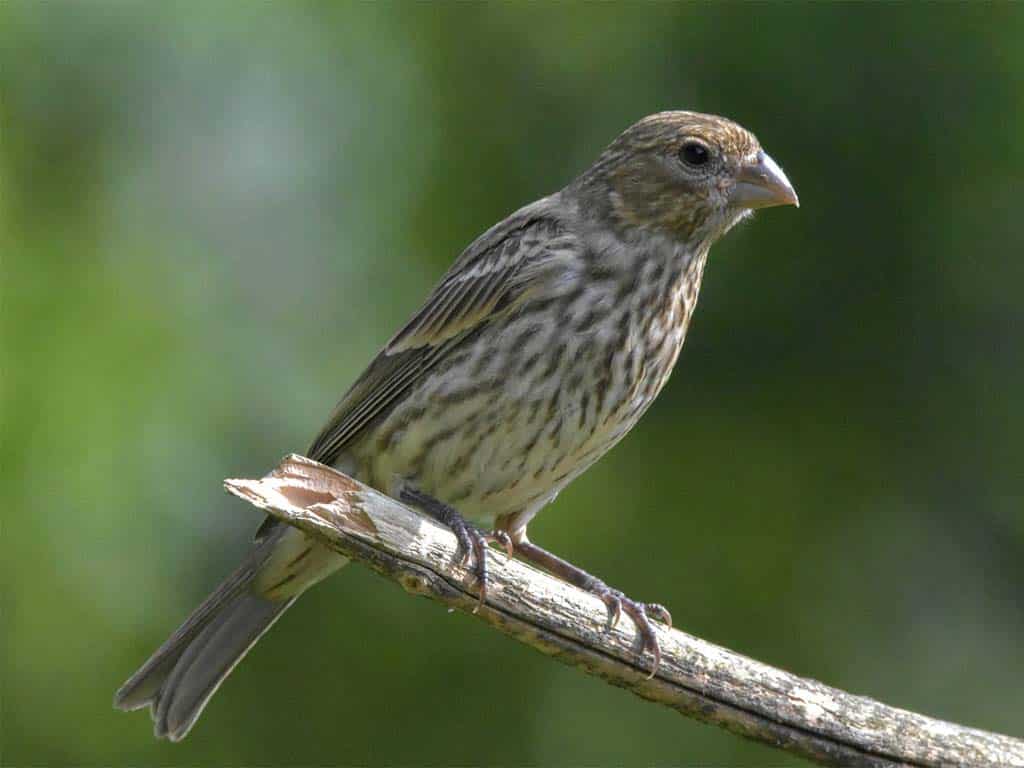
The House Finch (Haemorhous mexicanus) has an interesting history in Ohio. Originally native to the western United States, it was introduced to the eastern part of the country in the 1940s and has since become one of the most common backyard birds in Ohio.
Identification Tips:
- Males feature a red head, breast, and rump
- Females are grayish-brown with streaked underparts
- Both sexes have a notched tail and a stout, curved beak
Behavior and Adaptability: House Finches are highly adaptable and thrive in urban and suburban environments. They’re frequent visitors to bird feeders, showing a particular fondness for sunflower seeds.
Did You Know? The intensity of red coloration in male House Finches is directly related to their diet. Birds with access to a variety of carotenoid-rich foods display brighter plumage.
Finches In Ohio-Purple Finch: The Raspberry-Dipped Songster
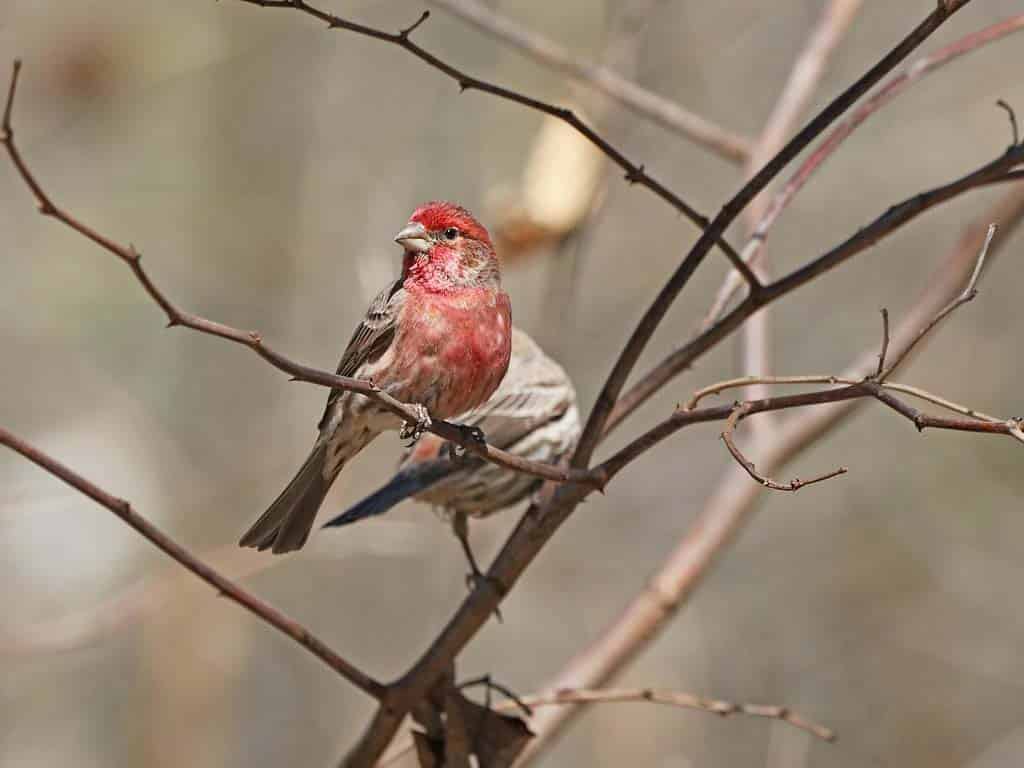
Often confused with the House Finch, the Purple Finch (Haemorhous purpureus) is a less common but equally charming visitor to Ohio. These birds are known for their rich, warbling song and distinctive appearance.
How to Distinguish from House Finch:
- More robust build with a larger, curved beak
- Males have a deeper red coloration, often described as “dipped in raspberry juice”
- Females have a prominent white eyebrow stripe
Seasonal Patterns in Ohio: Purple Finches are more common in Ohio during winter months, often appearing at feeders alongside other finch species. Their presence can be cyclical, with some years seeing higher numbers than others.
Vocalization: The Purple Finch’s song is a rich, warbling melody that’s more complex and musical than that of the House Finch.
Check this out Parrots in Florida – Complete Guide To Wild Parakeets In Florida
Finches In Ohio-Common Redpoll: The Winter Wanderer

The Common Redpoll (Acanthis flammea) is a winter treat for Ohio birdwatchers. These small, streaky finches bring a touch of Arctic charm to the Buckeye State during colder months.
Key Characteristics:
- Small size with a distinctive red forehead patch
- Streaked brown body with a small, yellow bill
- Males have a rosy wash on the breast
Irruptive Migration Patterns: Common Redpolls exhibit irruptive migration, meaning their presence in Ohio can vary greatly from year to year. When food sources are scarce in their northern breeding grounds, they may appear in large numbers across the state.
Cold Weather Adaptations:
- Dense plumage for insulation
- Ability to store seeds in an expandable esophagus pouch
- Can tunnel into snow for shelter in extreme conditions
Check this out Why Do Hawks Screech? The Surprising Truth
Finches In Ohio-Pine Siskin: The Striped Nomad
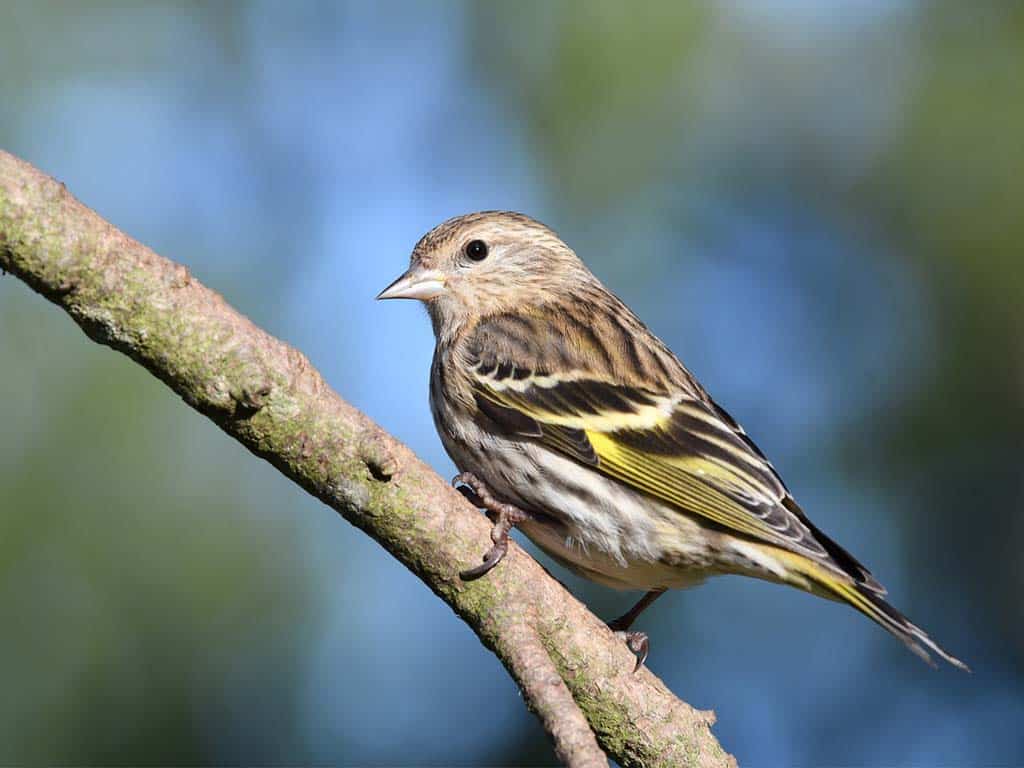
The Pine Siskin (Spinus pinus) is a small, streaky finch that can be a challenging but rewarding find for Ohio birdwatchers. These nomadic birds are known for their erratic movements and fondness for coniferous forests.
Identification Tricks:
- Heavy streaking on a brown body
- Yellow wing bars and tail edges (can be subtle)
- Sharp, pointed bill for extracting seeds from cones
Nomadic Lifestyle: Pine Siskins are highly nomadic, with their presence in Ohio varying greatly from year to year. During irruptive years, they may appear in large flocks at feeders across the state.
Preferred Habitat: While they favor coniferous forests, Pine Siskins can also be found in mixed woodlands and even suburban areas with suitable food sources.
Finches In Ohio-Evening Grosbeak: The Colorful Giant
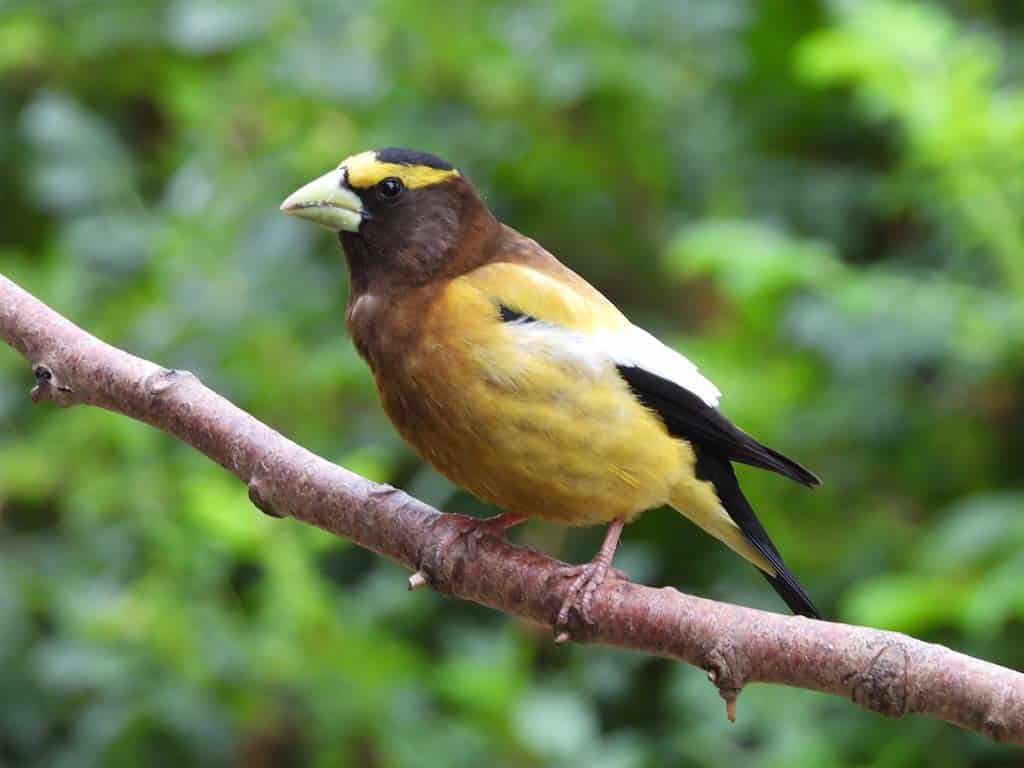
The Evening Grosbeak (Coccothraustes vespertinus) is a striking and sizeable finch that occasionally graces Ohio with its presence during winter months. These birds are a prized sighting for many birdwatchers due to their vibrant plumage and irregular appearances.
Notable Features:
- Large, stocky build with a massive, pale bill
- Males sport bright yellow bodies with black wings and a prominent yellow forehead stripe
- Females are more subdued in coloration but still distinctive
Irregular Winter Visitor: Evening Grosbeaks are not annual visitors to Ohio. Their presence is often tied to food availability in their northern breeding grounds, making them an exciting find when they do appear.
Beak Adaptations: The Evening Grosbeak’s powerful beak is specially adapted for cracking large seeds and even small nuts, allowing them to access food sources that smaller finches can’t manage.
Check this out Birds With Funny Names – The Complete List of Funny Bird Names
Finches In Ohio-Red Crossbill: The Conifer Specialist
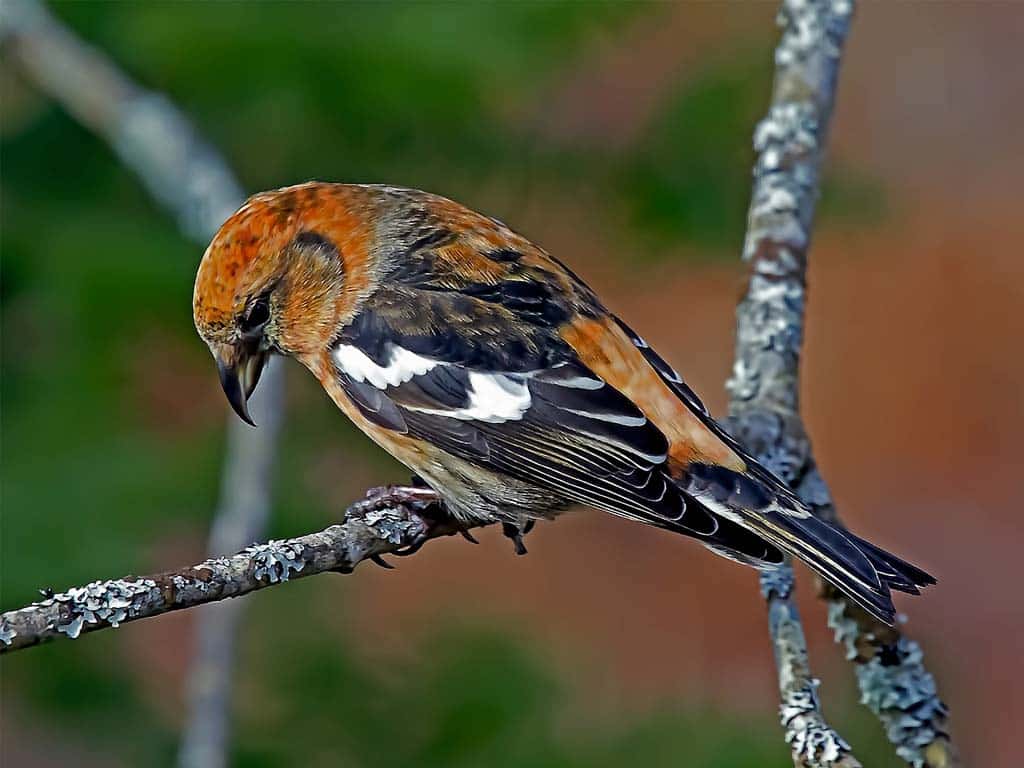
The Red Crossbill (Loxia curvirostra) is a fascinating finch species known for its unique beak adaptation. These birds are specialists in extracting seeds from conifer cones, making them a treat to observe in Ohio’s evergreen forests.
Unique Bill Structure:
- Upper and lower mandibles cross at the tips
- Allows for efficient extraction of seeds from tightly closed pine cones
- Bill shape can vary depending on the primary conifer species in their habitat
Different “Types” Based on Call Notes: Ornithologists have identified several distinct “types” of Red Crossbills, each with its own specific call note and preferred conifer species. This diversity highlights the complex relationship between these birds and their food sources.
Breeding Behavior: Red Crossbills have a unique breeding strategy tied to conifer seed crops. They can nest at almost any time of year if food is abundant, even in the depths of winter.
Check this out Woodpeckers In Michigan – 8 Sensational Michigan Woodpeckers
Finches In Ohio-White-winged Crossbill: The Rare Winter Treat
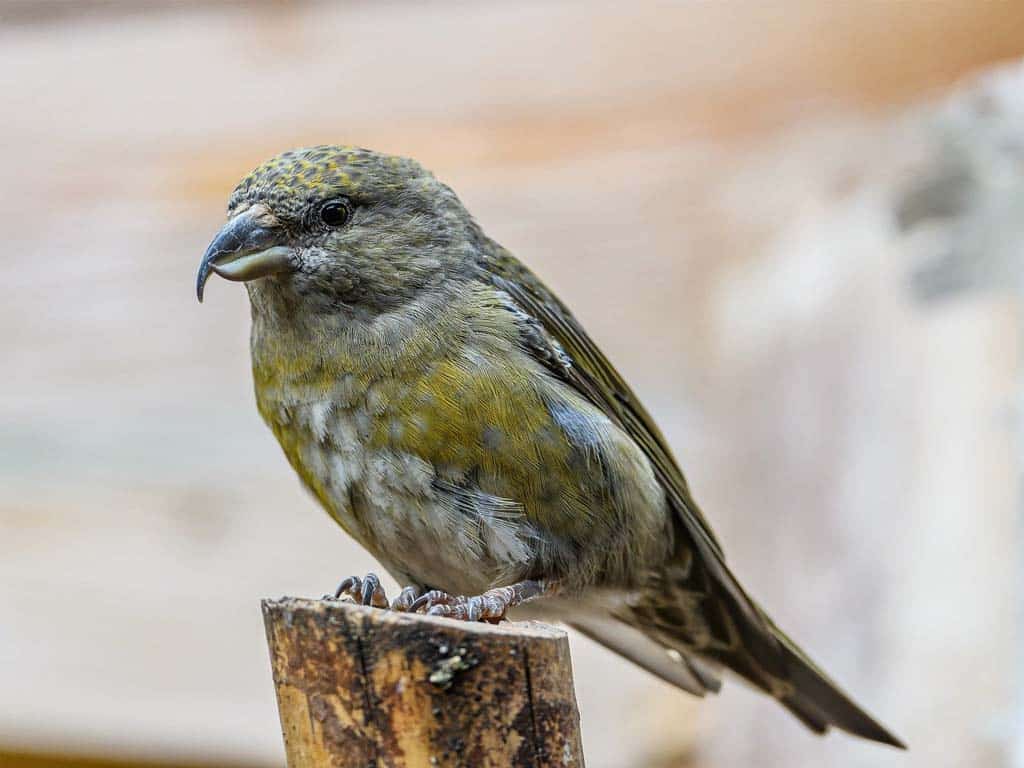
The White-winged Crossbill (Loxia leucoptera) is a less common cousin of the Red Crossbill, making it an exciting find for Ohio birdwatchers. These birds are primarily found in the boreal forests of Canada but occasionally venture south into Ohio during irruptive years.
Distinguishing Features from Red Crossbill:
- Prominent white wing bars (hence the name)
- Generally smaller and more compact than Red Crossbills
- Males have a rosy-pink body coloration
Ohio Sightings: White-winged Crossbills are rare visitors to Ohio, typically appearing during winter months when food sources in their northern range are scarce. Keep an eye out for them in stands of spruce and other conifers.
Specialized Feeding Technique: Like their red cousins, White-winged Crossbills use their crossed bills to pry open conifer cones. They can hang upside down and move acrobatically through the treetops while feeding.
Finches In Ohio-Hoary Redpoll: The Arctic Visitor
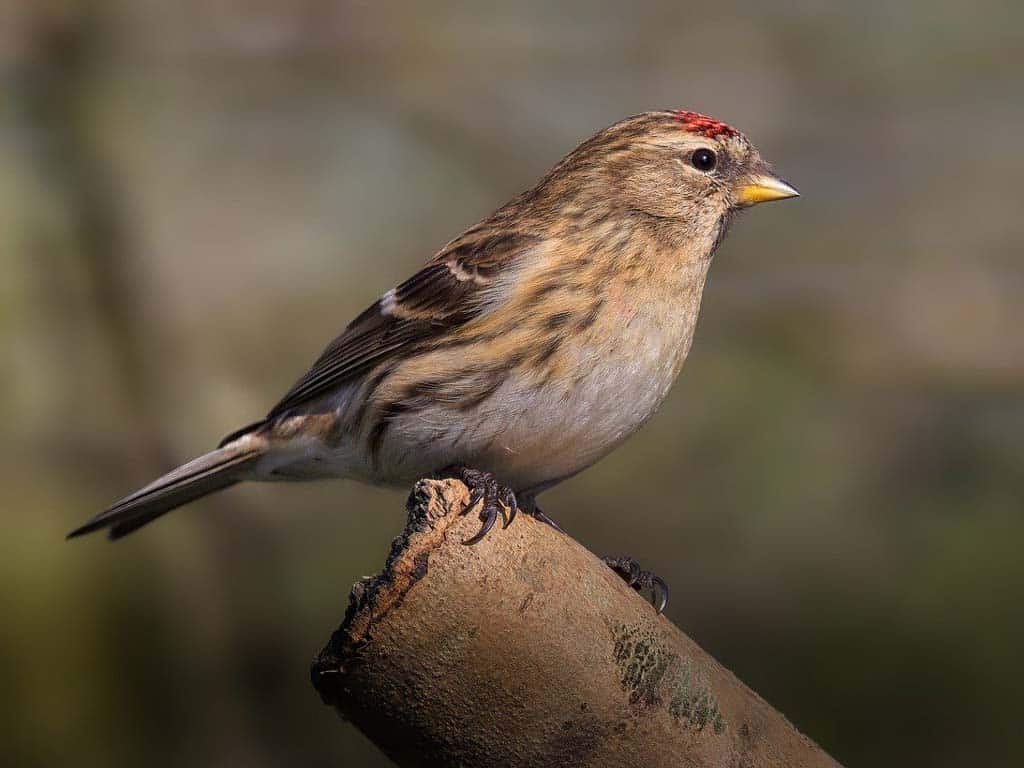
The Hoary Redpoll (Acanthis hornemanni) is a true Arctic specialist that occasionally makes its way to Ohio during particularly harsh winters. These pale, frost-like birds are a challenge to distinguish from their more common cousin, the Common Redpoll.
Differences from Common Redpoll:
- Overall paler appearance with a “frosted” look
- Less streaking on the sides and rump
- Smaller bill and a stubbier appearance
Rarity in Ohio: Hoary Redpolls are extremely rare visitors to Ohio. When they do appear, it’s usually in the company of Common Redpolls during irruptive years.
Where to Look: Your best chance of spotting a Hoary Redpoll in Ohio is at feeders in the northern part of the state during mid to late winter. They often mingle with flocks of Common Redpolls.
Adaptations for Extreme Cold:
- Extra-dense plumage for insulation
- Ability to store seeds in their crop for overnight energy
- Can lower their body temperature to conserve energy in extreme cold
Attracting Finches to Your Ohio Backyard
Creating a finch-friendly backyard can bring these colorful visitors right to your doorstep. Here are some tips to make your space more attractive to Ohio’s finch species:
Native Plants That Finches Love
- Purple Coneflower (Echinacea purpurea)
- Black-eyed Susan (Rudbeckia hirta)
- Sunflowers (Helianthus spp.)
- Thistle (Cirsium spp.)
- Asters (Symphyotrichum spp.)
Feeder Types and Seed Preferences
| Finch Species | Preferred Feeder Type | Favorite Seeds |
| American Goldfinch | Tube feeder with small ports | Nyjer (thistle) seeds |
| House Finch | Platform or hopper feeder | Black oil sunflower seeds |
| Purple Finch | Platform feeder | Safflower seeds |
| Common Redpoll | Mesh sock feeder | Nyjer seeds, small sunflower chips |
| Pine Siskin | Tube feeder | Nyjer seeds, sunflower hearts |
Providing Water and Shelter
- Install a shallow birdbath with moving water to attract finches
- Plant dense shrubs or evergreens for shelter and potential nesting sites
- Consider adding a brush pile in a corner of your yard for additional cover
Finch Watching in Ohio: Hotspots and Tips
Best Locations for Finch Diversity
- Magee Marsh Wildlife Area (Northwest Ohio)
- Cuyahoga Valley National Park (Northeast Ohio)
- Shawnee State Forest (Southern Ohio)
- Mohican State Park (Central Ohio)
- Ottawa National Wildlife Refuge (Northern Ohio)
Seasonal Timing for Different Species
- Spring: American Goldfinches begin to change into breeding plumage
- Summer: House Finches and American Goldfinches are common at feeders
- Fall: Watch for migrating Pine Siskins and Purple Finches
- Winter: Best time to spot Common Redpolls and Evening Grosbeaks
Ethical Birdwatching Practices
- Maintain a safe distance from birds and nests
- Use recorded bird calls sparingly and responsibly
- Stay on designated trails to protect habitat
- Participate in citizen science projects like eBird to contribute to conservation efforts
Conservation and Challenges
Climate Change Impacts on Ohio Finches
Climate change poses significant challenges to Ohio’s finch populations:
- Shifting ranges may bring new species while pushing others northward
- Changes in vegetation affect food availability and nesting habitats
- Extreme weather events can disrupt breeding and migration patterns
Habitat Loss and Fragmentation
Urban development and agricultural practices continue to impact finch habitats:
- Loss of native plant species reduces natural food sources
- Fragmentation of forests affects species like crossbills and Pine Siskins
- Pesticide use can reduce insect populations, an important food source for nestlings
How Ohioans Can Help Protect Finch Populations
- Plant native species in your garden to provide natural food sources
- Participate in citizen science projects to monitor finch populations
- Support local conservation organizations and initiatives
- Advocate for policies that protect wildlife habitats and address climate change
- Practice responsible bird feeding to avoid spreading diseases
Conclusion: The Joy of Finch Diversity in Ohio
Ohio’s nine finch species offer a window into the remarkable diversity of our natural world. From the cheery song of the American Goldfinch to the rare sighting of a Hoary Redpoll, each species brings its own unique charm to the Buckeye State.
As we’ve explored, these small but mighty birds play crucial roles in our ecosystems and provide endless entertainment for birdwatchers. By understanding their habits, providing suitable habitats, and supporting conservation efforts, we can ensure that future generations will continue to enjoy the colorful spectacle of finches in Ohio.
Whether you’re setting up your first bird feeder or planning your next birdwatching expedition, remember that every observation counts. Your passion for these feathered jewels contributes to our collective knowledge and helps protect these beloved birds for years to come.
So grab your binoculars, fill up those feeders, and get ready to experience the wonder of Ohio’s finches. The skies are waiting, and there’s always another fascinating finch moment just around the corner!





